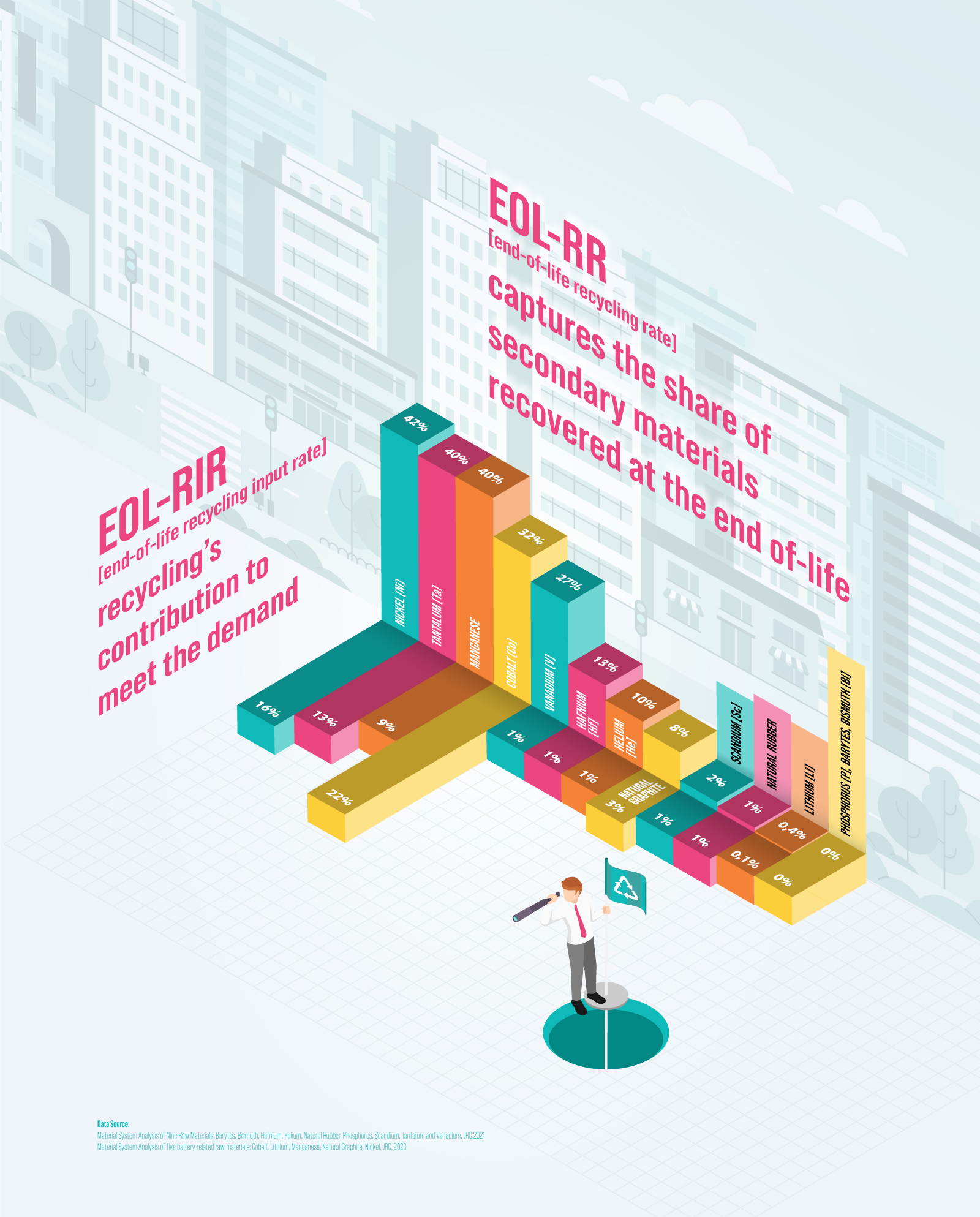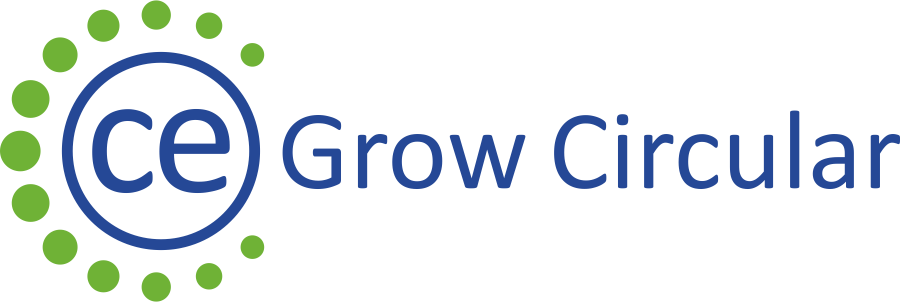CRM Circularity Opportunities

Reducing dependency on primary critical raw materials through circular use of resources, sustainable products and innovation is also one of the four core objectives of the EU Action Plan on Critical Raw Materials.
The level of circularity varies significantly across different critical raw materials. Some materials have considerable end of life recycling rates (EOL RR), however their input rates (EOL RIR) are much lower due to growing demand for these materials. Only in a few cases does the availability of secondary materials approach above 20% of current demand of CRM (tungsten, antimony, cobalt, titanium, PGM). For most CRM however, the recycling input rate is less than 1%. The challenge for EU is the lack of systems, technologies, and industrial processes to recycle CRMs to a degree that would cover its needs in a meaningful and economic way. Several pilot recycling processes are currently under research and development.

CRM Insider Tool
CRM opportunities in various sectors
Substituting CRMs with other materials is challenging. Direct substitution may impair the functioning of technologies and properties of devices in which they are deployed. Developing novel technologies and approaches that better fit the substitutes for specific purposes is a challenge, hence substitution is only realistically possible in the longer term and does not provide a to short- or medium-term solution.
Some of the core strategies to achieve better circularity of CRM in EU system are:
- Cooperation among industry and academia to make substantial progress in the science and technology of material recovery, recycling, better performing materials and substitutes.
European Raw Material Alliance
EIT Raw Materials Collaboration
SCRREEN
(Solutions for CRitical Raw materials – a European Expert Network)
- Improved regulatory environment on extended product lifetime; on waste collection, treatment, and recovery at the European level and its effective transposition to members states (e.g. the “right to repair”, declaring content of CRMs in products; design requirements for easier extraction at the end of life of a products).
- Legislate mandatory end-of-life CRM recycling for selected waste categories
-
Empowering consumers to obtain reliable & useful information on products they buy, e.g. on their lifespan and repair options in order to make disassembling and recycling a routine.
Data on CRM’s contained in waste is limited (see more in subcategories). As regards secondary CRMs extracted or extractable from mining waste, at present there is no detailed database at EU or Member State level although some EU-funded projects are working towards addressing this gap.
The Urban Mine Knowledge Data Platform provides access to data and intelligence on secondary raw materials in various wastes. It provided data about stocks, flows, waste arisings and treatment of various product groups that are highly relevant as potential secondary sources of CRMs, i.e. waste electrical and electronic equipment (WEEE), end-of-life vehicles (ELVs), batteries and mining wastes.


